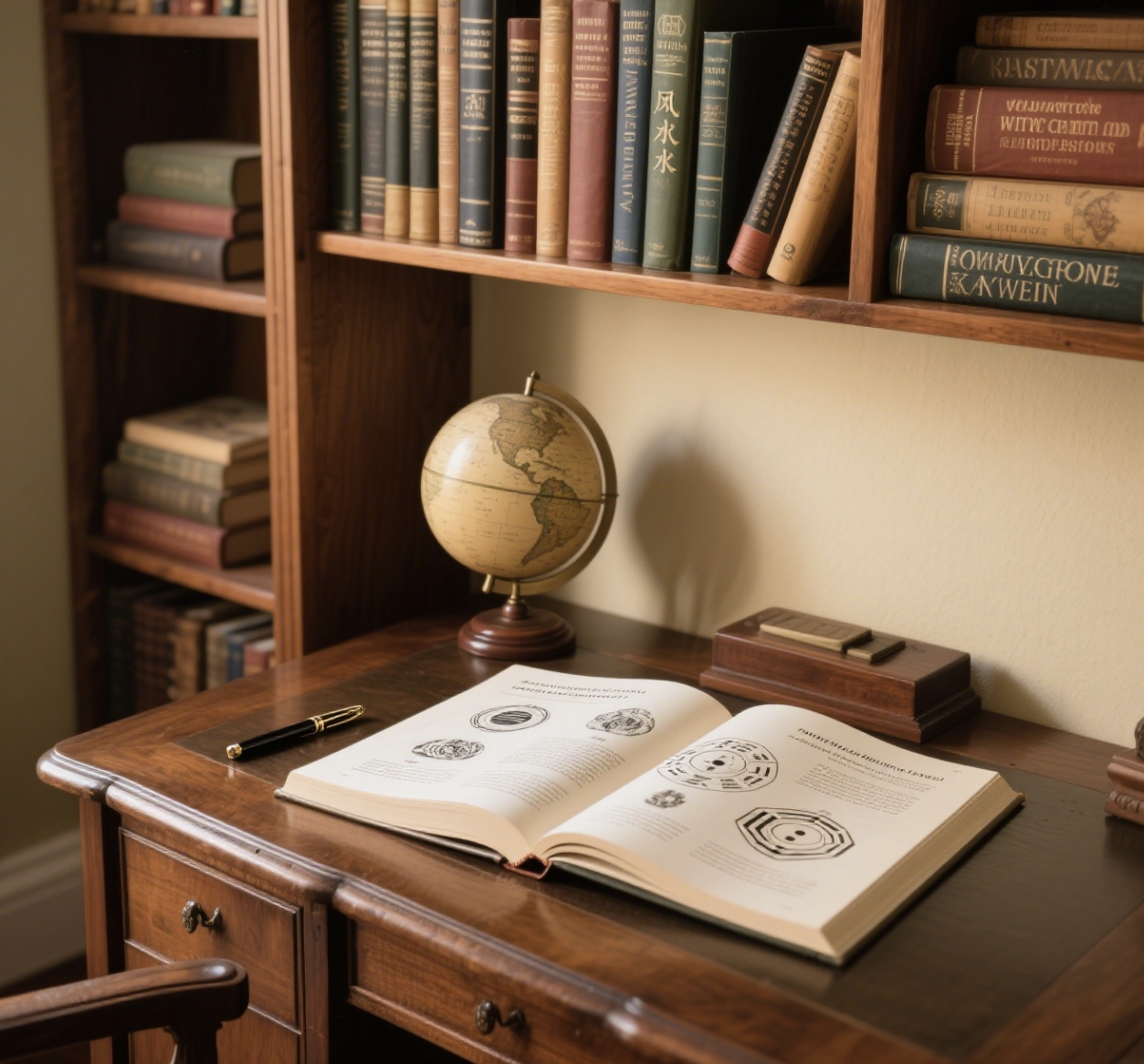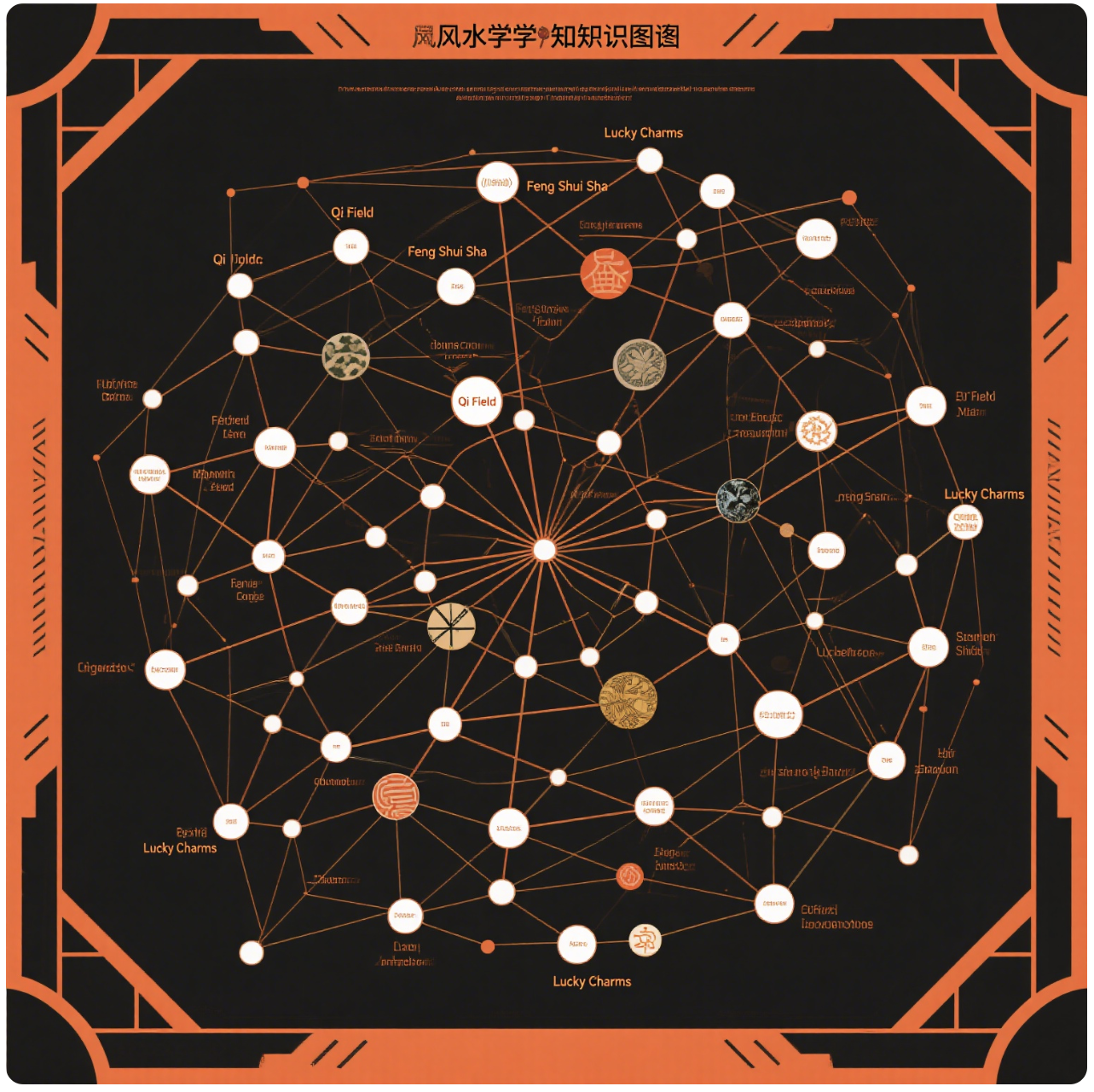How to Use Feng Shui for a Harmonious Home
Feng Shui Basics and Home Harmony Concepts
Feng Shui, an ancient wisdom from China, has become a popular topic in mainstream American culture in recent years in pursuit of quality of life. It is not a superstition, but a practical science that studies the relationship between the environment and energy, with the core concept of “optimizing the spatial layout so that the occupants can live in harmony with the natural energy”. For Americans, Feng Shui coincides with the concepts of “sustainable design” and “positive living” – it emphasizes not only visual aesthetics, but also detailed adjustments to improve It emphasizes not only visual aesthetics, but also the details that can be adjusted to enhance physical and mental health, family relationships, and even career luck. In this article, we will use the familiar logic of Americans to break down how to create a “Feng Shui-friendly” home in simple steps, so that the space becomes a nourishing energy field for life.
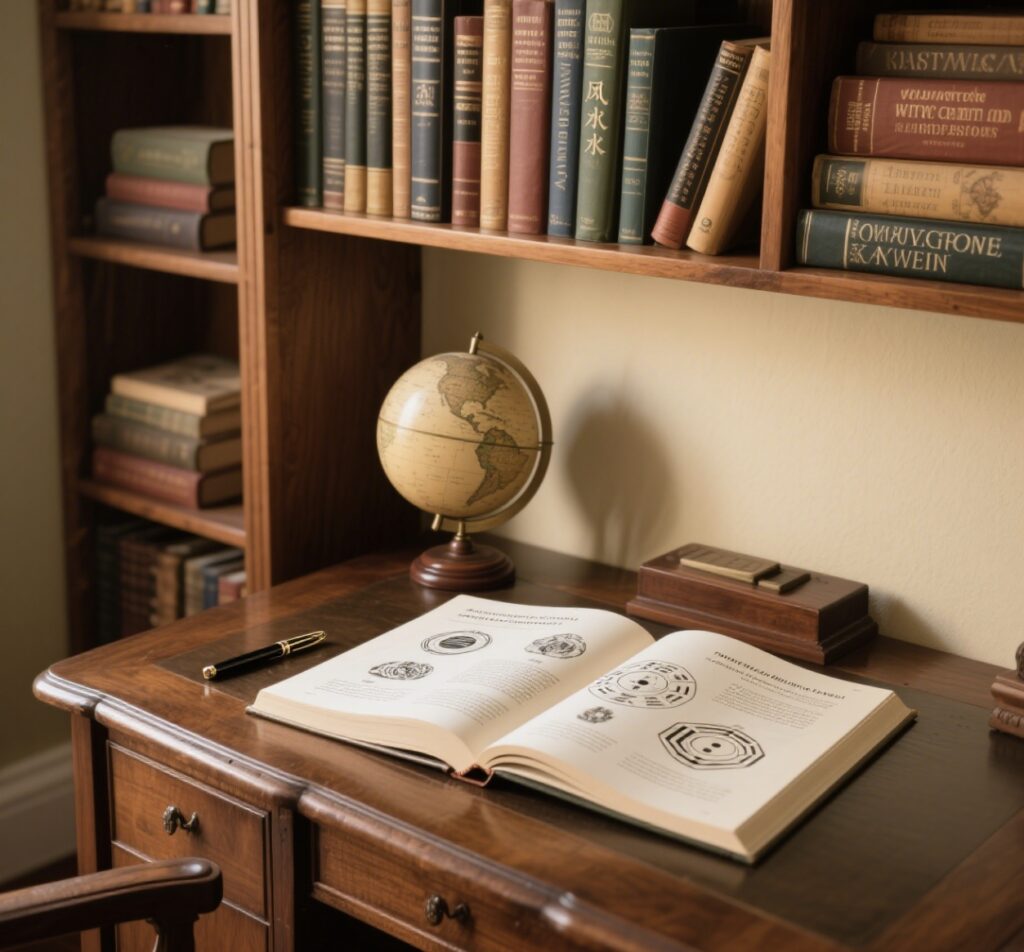
Entrance and living room: the “first impression” energy station of the home

The entrance area is the gateway to the energy of the home. The open entryway, common in American homes, can be optimized in three steps:
- Clear the clutter: clutter can impede the flow of energy, it is recommended to move the shoe racks and delivery boxes to the storage room, keeping only the seasonal shoes and a decorative umbrella.
- Set up a “welcome symbol”: place a fern (symbolizing vitality) or a warm wall lamp (attracting positive energy) on the side of the door, and avoid a layout that is directly in front of a mirror (which may reflect energy).
- Color Psychology: Paint the door frame in a neutral color such as beige or light grey, and match it with a colorful doormat (e.g., blue for calmness, green for health) to form a visual transition.
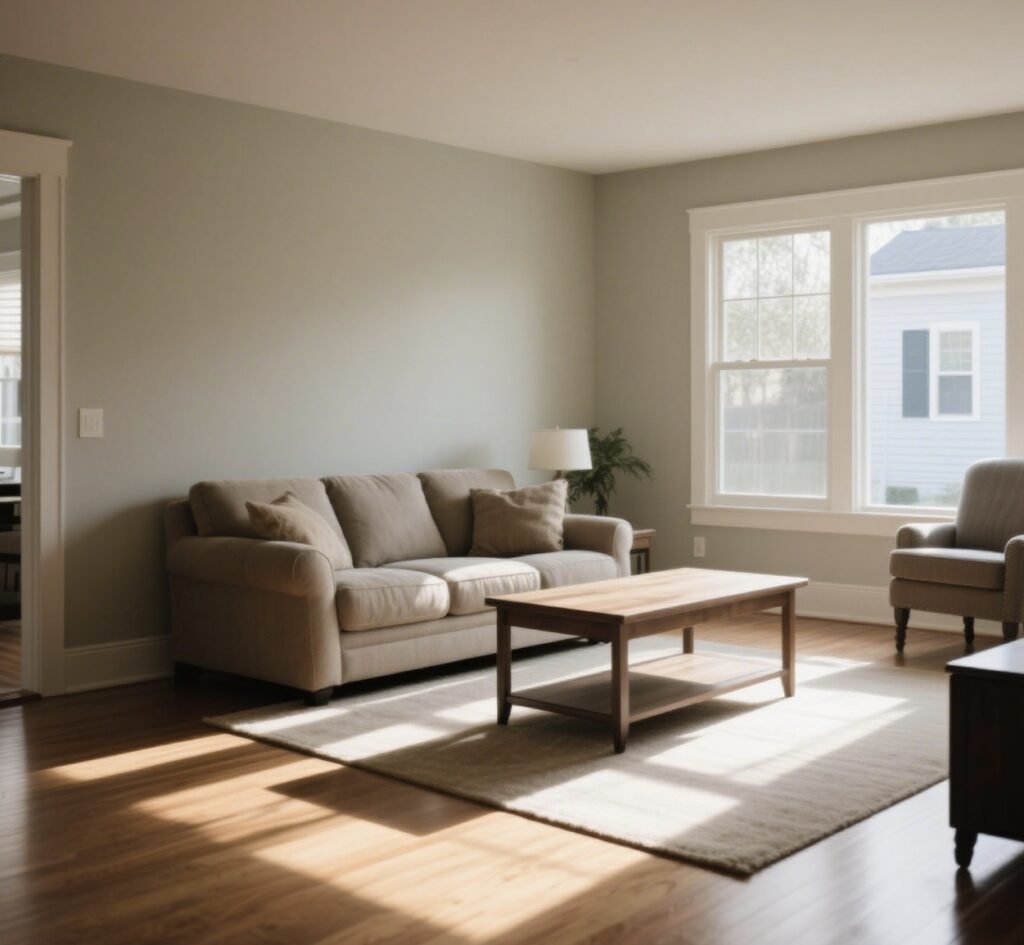
The layout of the living room needs to be balanced between socializing and relaxing:
- Sofa against the wall, not against the window: middle-class Americans favor leather sofas are recommended to be placed against the wall to form a “mountain” pattern, to avoid the uneasiness brought about by the back to the window.
- Focus law: TV wall or fireplace as the visual center, both sides can be placed symmetrical floor lamps or bookshelves, to enhance the sense of balance.
- Light Levels: Choose dimmable design for the main light, with floor lamps and candles to simulate the circadian rhythm of natural light and promote melatonin secretion.

Bedroom and Kitchen: Private Space and Energy Replenishment Station
Feng Shui in the bedroom directly affects the quality of sleep:
- Bed taboo: avoid bed head facing the door (“door rush” leads to nervousness), also should not stick to the window (energy instability). The best position is against the wall and can see the door, but not directly opposite.
- Material selection: solid wood bed frame than the metal frame is more in line with feng shui “natural elements” principle, bedding recommended cotton and linen materials, colors to light blue, beige and other sleep-aiding colors.
- Isolation of electronic devices: 1 hour before going to bed will move the phone out of the bedroom, or with a woven basket storage, to reduce electromagnetic interference.
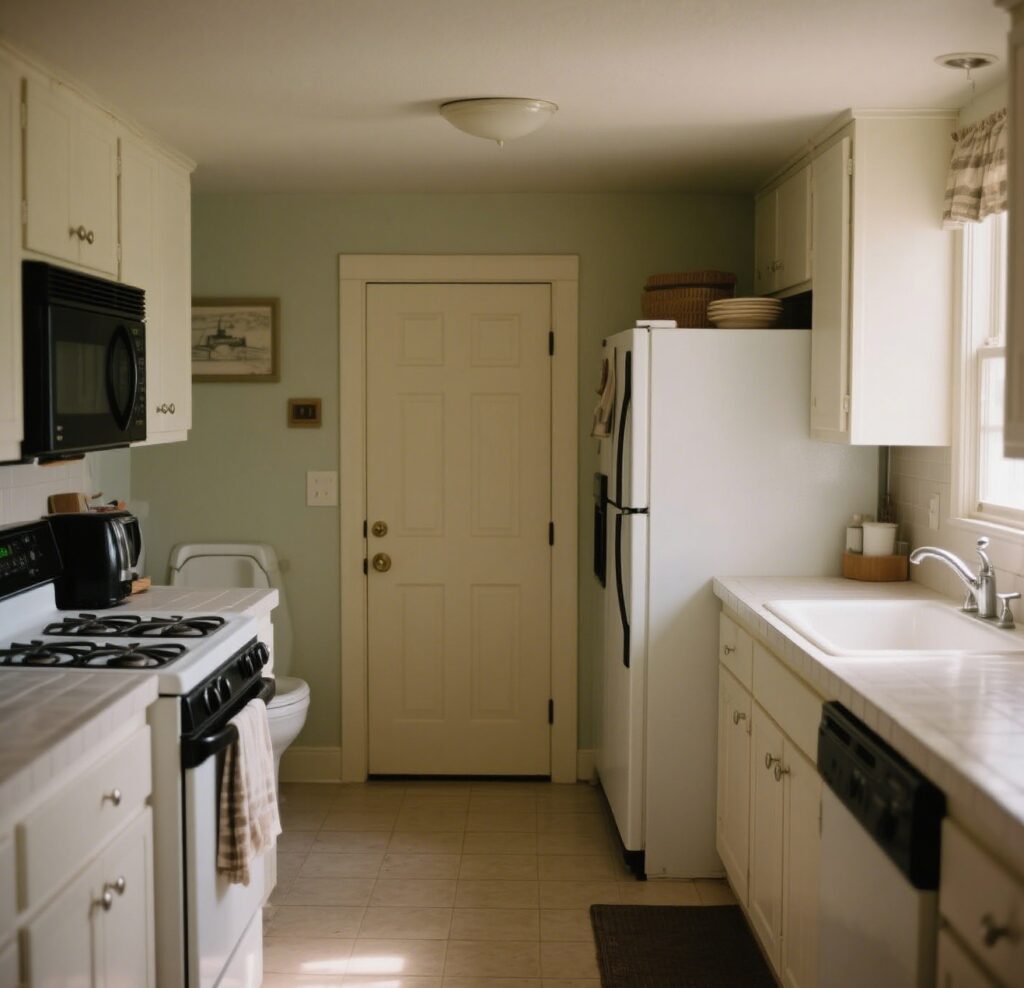
Kitchen feng shui is associated with family wealth and health:
- Stove location: stove on behalf of the “Treasury”, should be avoided back to the window (energy loss) or directly opposite the pool (water and fire). Abstract fruit painting can be hung above the stove, symbolizing abundance.
- The use of color: the United States common open kitchen suitable for yellow, orange walls, stimulate the appetite; cabinet door handles into a rounded design, to avoid the sharp edges of the “fate”.
- Rituals at the table: light a cinnamon scented candle at breakfast every day, not only in line with Thanksgiving traditions, but also through the aroma to activate the positive energy cycle.
Detailed adjustments and personalized feng shui practice
The beauty of Feng Shui is that “fine-tuning is effective”:
- Green plant strategy: put a pot of anemone in the corner of the corridor (to purify the air), put a pot of Buddhist pine in the window of the study (to improve concentration), avoid thorny plants (such as cactus).
- Use of crystals: Amethyst clusters on the left side of the desk (to enhance intuition), pink crystals on the bedroom dresser (to improve intimacy), and once a month, rinse with running water to purify the energy.
- Personalized five elements adjustment: According to the year of birth to check the five elements attributes (such as 1980-1986 people are gold), in the corresponding direction (the West) placed metal decorations, or white, gold soft furnishings to strengthen the luck.
Cultural Integration Tip:
You can combine Feng Shui with local traditions, for example, by adding Feng Shui elements to your Christmas decorations: wrap red ribbons around fir branches (to activate the fire element) and place a pair of ceramic deer by the fireplace (to symbolize harmony), so that the holiday atmosphere complements the energy of the space. Remember, the essence of Feng Shui is to “make the home an extension of the soul,” not a set of rigid rules – start your energy upgrading journey today with a small change!
This is all we have to share about how to use feng shui for a harmonious home, and we will be sharing more feng shui knowledge mapping and framework in the future.
